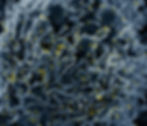Microbial Identification: Why It Matters in Manufacturing
- Ameer Danish
- Aug 27
- 3 min read
Updated: Oct 21
In today’s manufacturing world, whether it’s pharmaceuticals or medical devices, tests like sterility, bioburden, and environmental monitoring (e.g., active air sampling and surface swabbing) are standard practice. These tests aren’t just regulatory checkboxes; they’re essential for ensuring product quality and, most importantly, user safety.
But there’s one critical step that often gets overlooked: microorganism identification.
What Is Microorganism Identification?
Microorganism identification is the process of determining the species of microbes found during sterility, bioburden or environmental testing. For example, if your bioburden test reveals high microbial growth, identification helps you figure out what those microbes are.
Why does this matter? Because knowing the species gives you clues about where the contamination might have come from, even if the location is not 100% precise. This insight can be a game-changer for root cause analysis and continuous improvement.

Why Is It So Important?
According to ISO 11737-1:2018, specifically Clause 6.2 on microbial characterization, this step is necessary. Here’s why:
Track Changes in Microbial Flora: Identification helps you monitor shifts in the types of microorganisms present over time. This is especially useful when validating or adjusting sterilization processes.
Understand Resistance Profiles: Some microorganisms are more resistant to certain sterilization methods. Knowing what you’re dealing with allows you to tailor your approach and avoid ineffective sterilization.
Improve Contamination Control: Identification supports better decision-making when investigating contamination sources, helping you refine cleaning protocols, gowning procedures, and facility design.

Common Techniques for Microbial Identification
ISO 11737-1:2018 outlines several practical methods for identifying microorganisms:
Colony morphology – Observing the shape, color, and texture of microbial colonies.
Cell morphology – Examining individual cells under a microscope.
Differential staining – Using dyes to distinguish between types of bacteria (e.g. Gram Staining).
Selective culturing – Growing microbes on media that favor specific types of microbes.
Biochemical properties – Testing metabolic reactions.
Genotypic analysis – DNA-based identification (e.g. 16S rRNA Identification).
Proteomic methods – Analyzing protein profiles.

Each method has its strengths, and often, a combination is used for more accurate results.
Microorganism identification isn’t just a regulatory requirement; it’s a strategic tool. It helps manufacturers maintain high standards, troubleshoot effectively, and stay ahead of potential risks.
By identifying the species of microorganisms present, you gain valuable insights into contamination sources, resistance profiles, and shifts in microbial flora. These insights are essential for optimizing sterilization processes and improving overall product safety and quality.
If you're looking to deepen your understanding of importance of microbial identification or simple identification techniques, we offer hands-on training services tailored to your needs. Whether you're just getting started, or refining your current practices, our training can help you build confidence and competence in basic microbial identification.
In our next article, we’ll explore how identification can help you determine the likely location of microorganisms, a key step in contamination control and facility hygiene. Stay tuned!
Reference
International Organization for Standardization. (2018). ISO 11737-1:2018 Sterilization of health care products — Microbiological methods — Part 1: Determination of a population of microorganisms on products (3rd ed.).
International Organization for Standardization. (2019). ISO 11737-2:2019 Sterilization of health care products — Microbiological methods — Part 2: Tests of sterility performed in the definition, validation and maintenance of a sterilization process (3rd ed.).
International Organization for Standardization. (2013). ISO 11137-1:2013 Sterilization of health care products — Radiation — Part 1: Requirements for development, validation and routine control of a sterilization process for medical devices (Amendment 1).
International Organization for Standardization. (2013). ISO 11137-2:2013 Sterilization of health care products — Radiation — Part 2: Establishing the sterilization dose.
International Organization for Standardization. (2015). ISO 14644-1:2015 Cleanrooms and associated controlled environments — Part 1: Classification of air cleanliness by particle concentration.
International Organization for Standardization. (2003). ISO 14698-1:2003 Cleanrooms and associated controlled environments — Biocontamination control — Part 1: General principles and methods.
International Organization for Standardization. (2003). ISO 14698-2:2003 Cleanrooms and associated controlled environments — Biocontamination control — Part 2: Evaluation and interpretation of biocontamination data.
